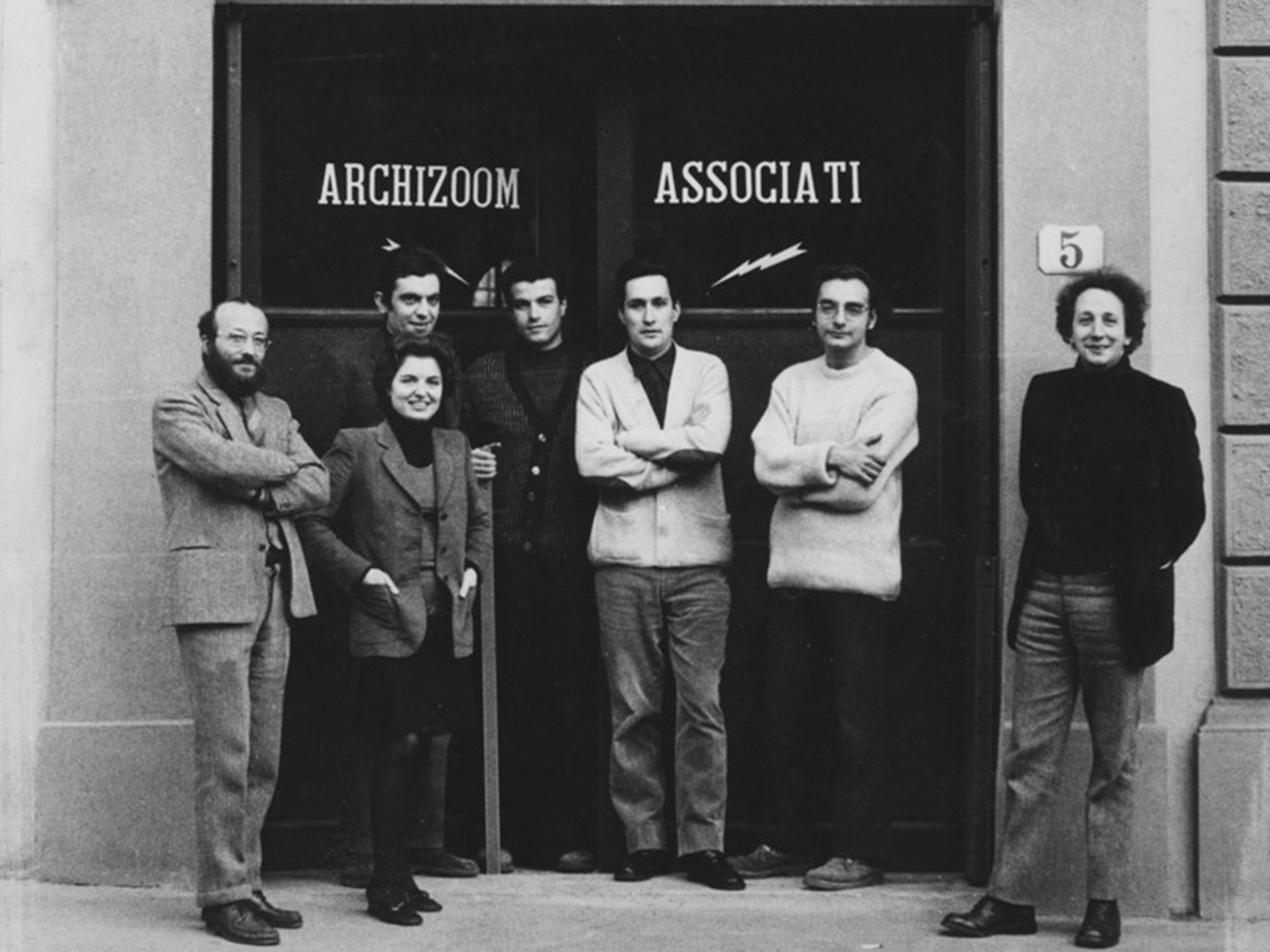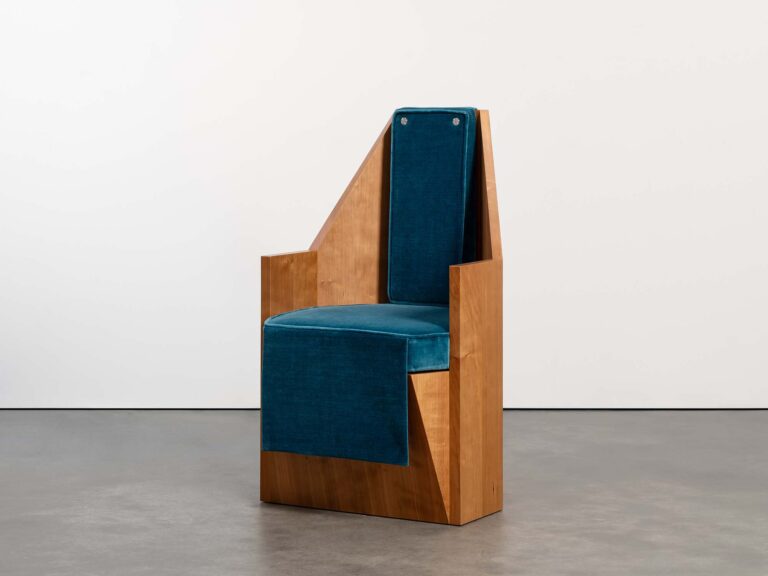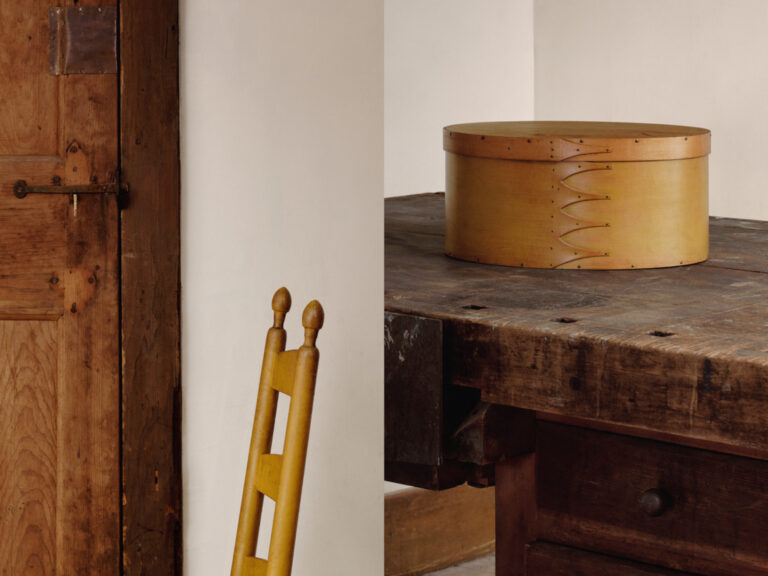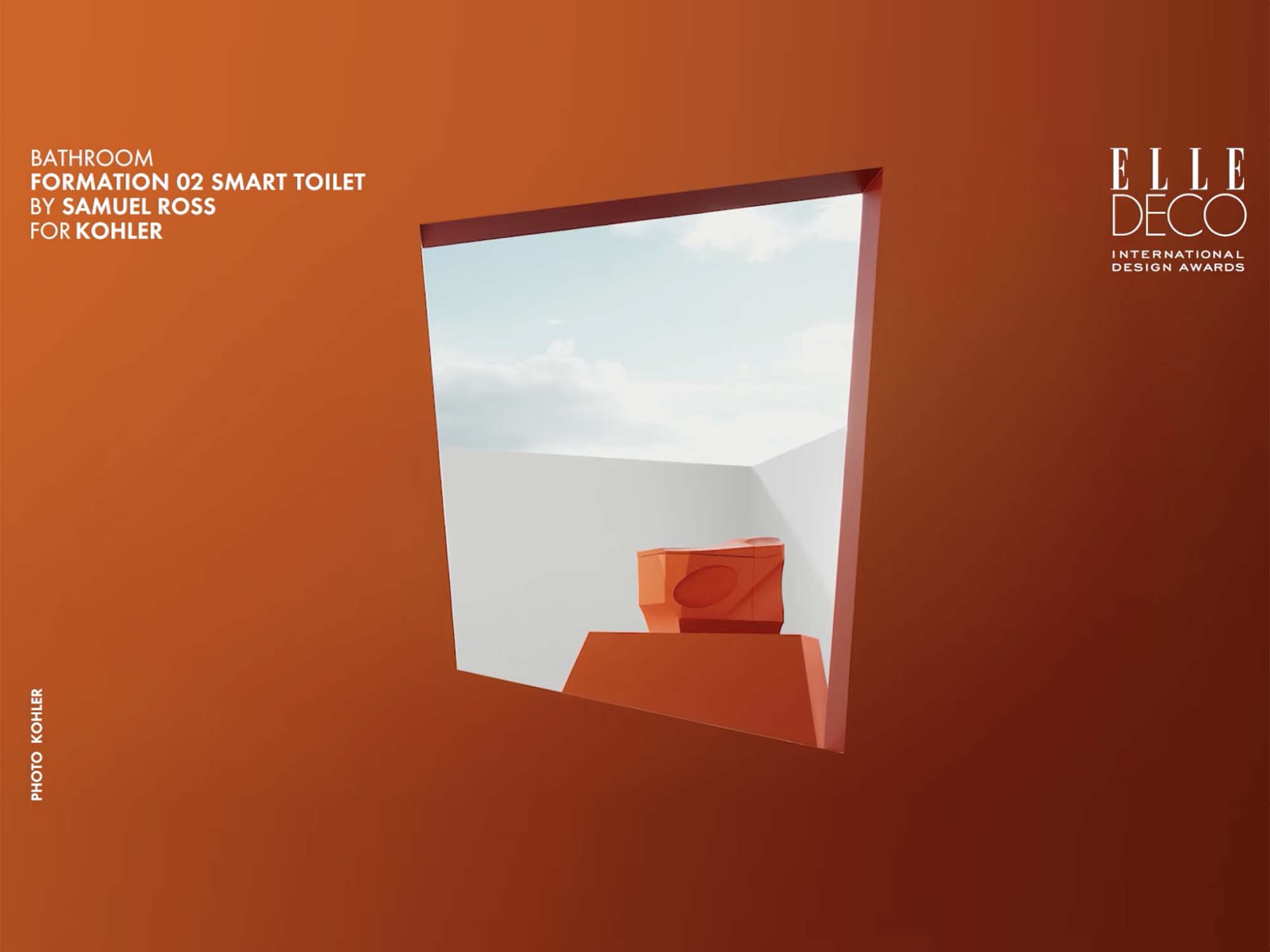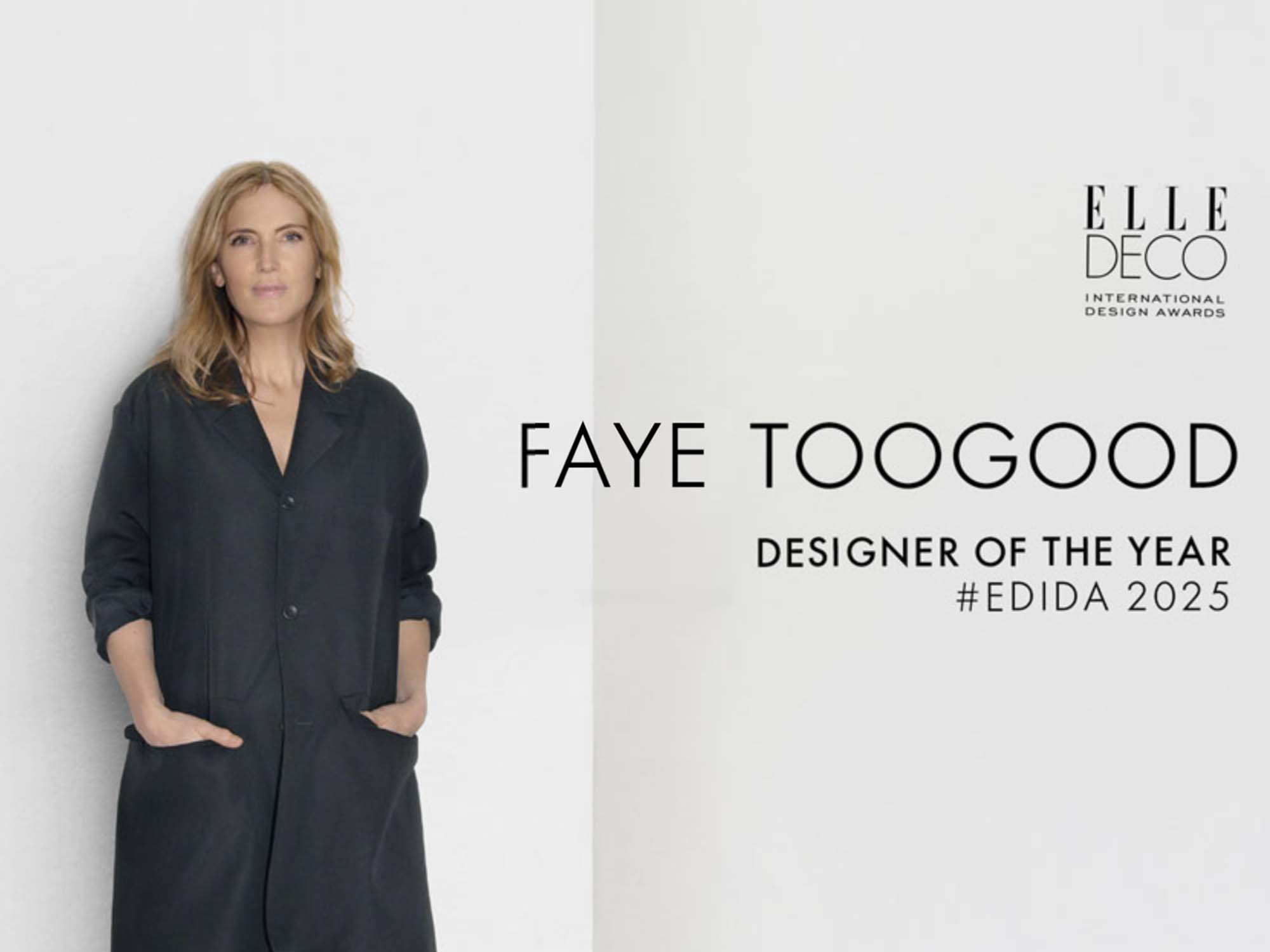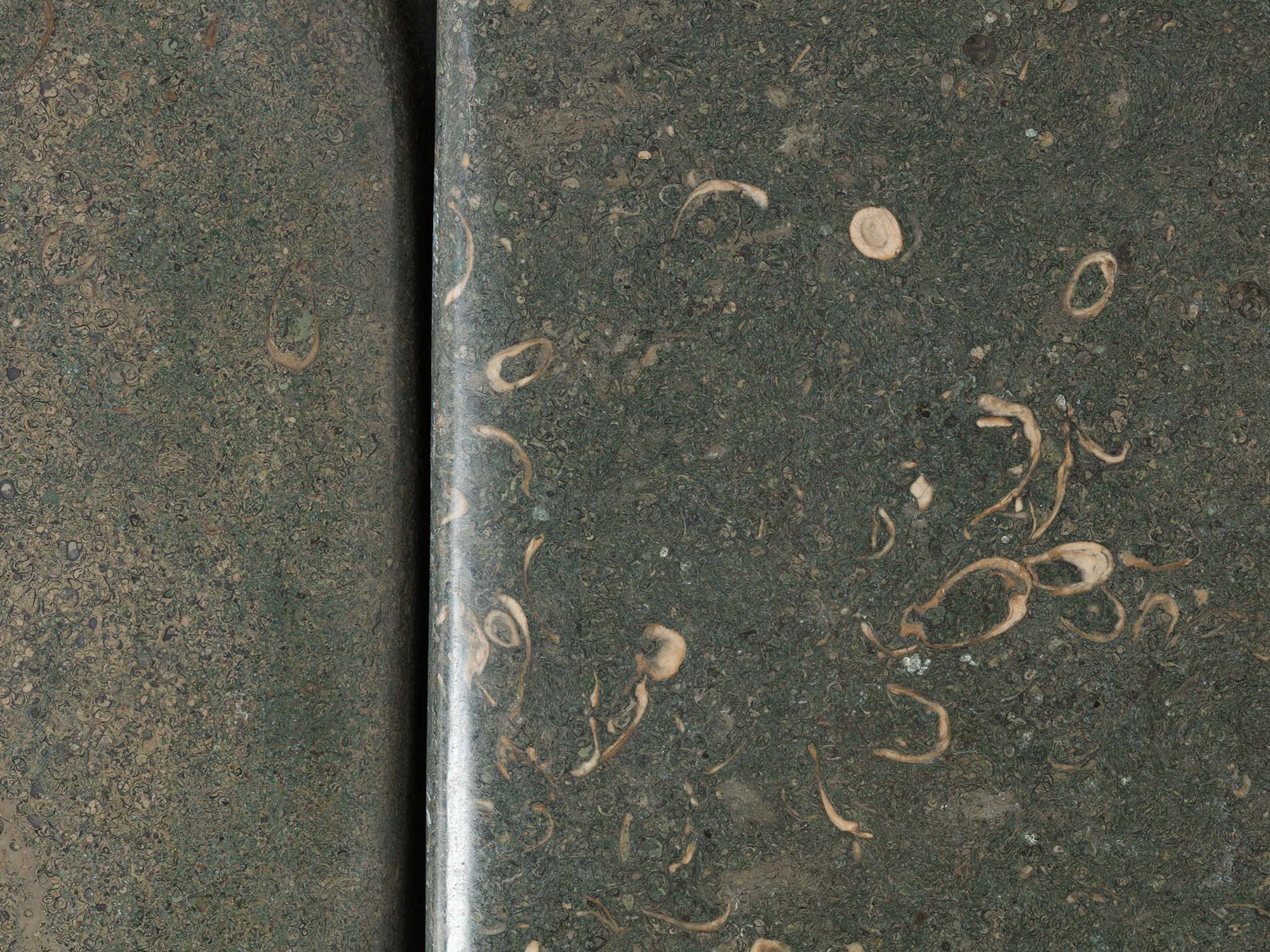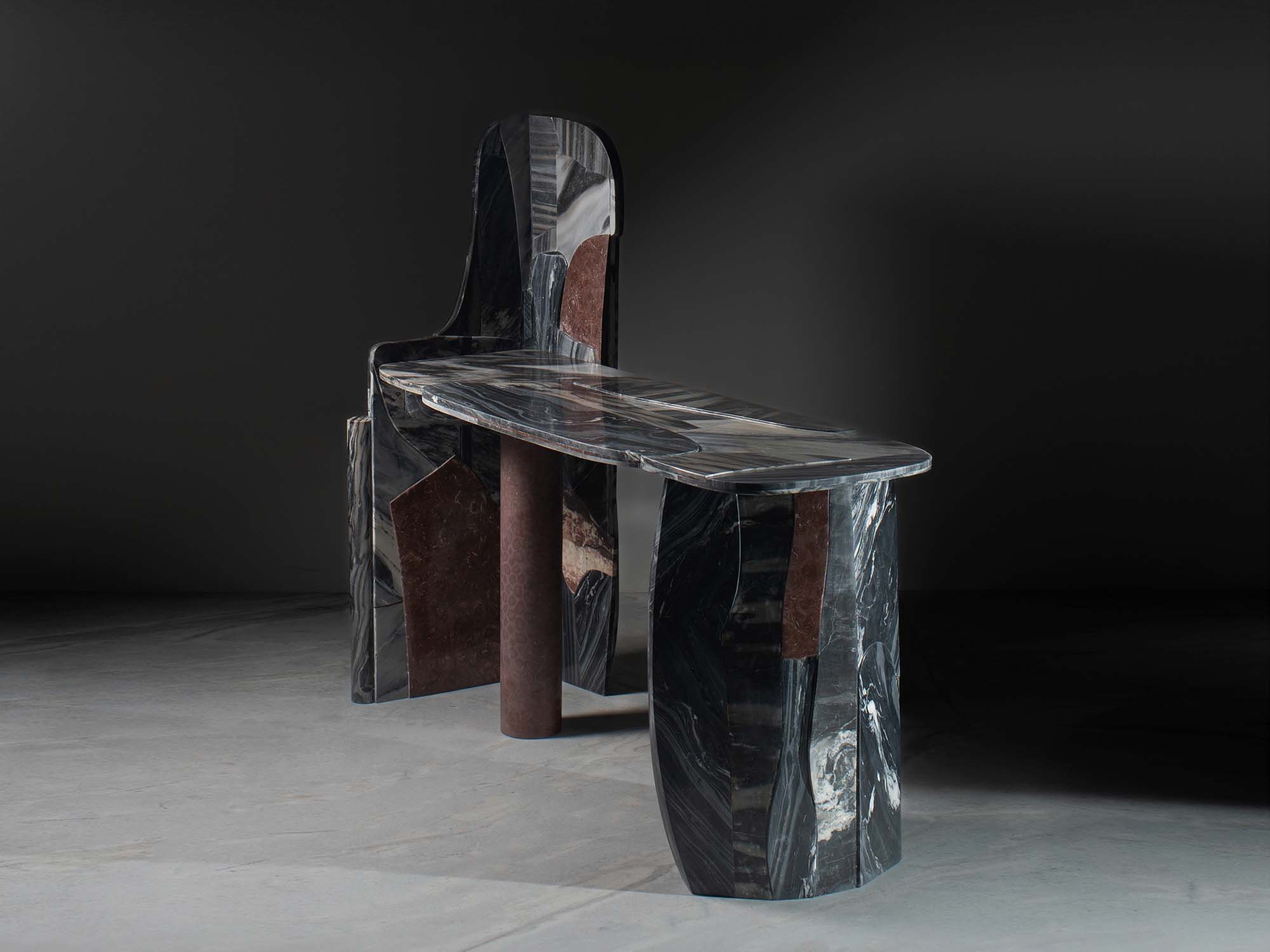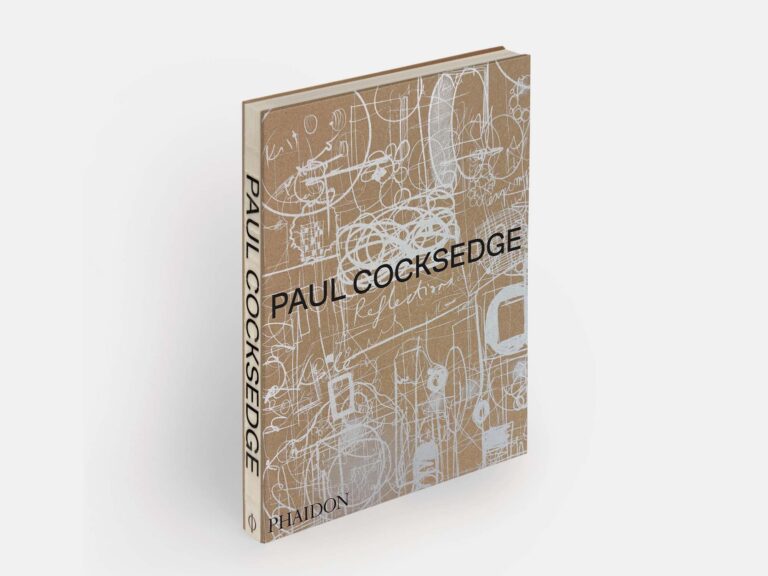This important series of conversations was originally published on November 2, 2020 as part of Friedman Benda’s Design in Dialogue conversation series. In these conversations, Dr. Catharine Rossi – a UK-based design historian, and Professor of Architecture at the University for the Creative Arts (UCA) Canterbury – speaks with Branzi about his long and influential career. Below is translated transcription of the first part of the conversation.
Part 1 – Origins: Andrea Branzi on Radical Design
An introduction to Andrea Branzi’s background, early career, and involvement with radical design collectives such as Archizoom, Global Tools, and Alchimia.
Catherine Rossi: Andrea, welcome to Design in Dialogue. It’s truly a great honor to speak with you and I would like to thank you for taking the time for this conversation. I’ll start with a simple question. And that is: Where are you now? Where are you having this conversation with me? Are you at home? Or at your studio in Milan?
Andrea Branzi: Currently, my home and my studio are the same place. They live together. They’re cohabiting.
CR: Okay, perfect. So all of life…
AB: Yes.
CR: … is taking place in one space. Okay. As I said, you were very generous to agree to this interview. And indeed, you have agreed to give us not just one hour. You’re giving us three hours in total.
AB: Yes.
CR: So to structure our conversation I’ve chosen three topics, one for each “episode.” And today we’re going to start at the beginning, with the context in which you began your career, but also with the work of the Radicals, the modes of working that the Radicals introduced and the work you started doing in this period.
So, the first question I’d like to ask concerns the beginning. I’d like to start with the beginning and the context in which you emerged as an architect, and how this was formative for your career. You got your degree in architecture from the University of Florence in 1966. This was a moment of intense changes and of social, economic, political, and cultural tensions in Italy. For example, there were the protests and occupations of 1968. There was also the Hot Autumn of 1969. So I’d like to know what experiences you had during this period, in the late 1960s. And in your view, what opportunities did architecture have and what challenges did it face during this period?
AB: Yes… That was certainly a very important period in the respect that you could sense the birth of many novel developments both in society and in culture. There was a tide of transformation that was obvious to see. And the result was, let’s say… For example, for our graduation theses… Because our group formed before we had to do graduation theses. At least one or two years beforehand. Our group, which in addition to me included Massimo Morozzi, Gilberto Corretti, and Paolo Deganello. We were… very… involved in the events that unfolded at the university. Indeed, one thing that happened was that the professors to whom we had to present our graduation theses, were very… They were alarmed. In a certain sense they were afraid of… Because youth culture was making waves not only politically… And we all know what happened. … but also culturally.
Images and strategies were developed that were totally unexpected. In view of the situation we reached an agreement, and this was rather unique. We reached an agreement with one professor that he would in some way… protect us when we had to present our graduation theses. There was a certain fear, an anxiety that was felt on the part of the professors themselves. This was an important sign. His name was Professor Cardini. He was a… professor at the University of Florence. When we graduated in 1966, people were already waiting for something big to happen at the university.
There was a kind of excitement in the air. Both the students and the professors felt it. At any rate… a characteristic aspect of the situation was already present, one that was already very far ahead of the tradition of the graduation theses engaged in by our friends, by the students, and so on. A very clear development was already underway that, as I said, was both political and cultural. But we lived in a city like Florence, a city that had a history of undeniable importance. The Renaissance and everything that… the city could represent in terms of art, innovation and experimentation. But it was also a city that didn’t have… that never possessed and still does not possess, even today, a… a sense of modernity. Modernity was always something foreign, something alien.
And this was to our advantage somehow, since what we were doing was also a way of conceiving a different kind of modernity. It was something that… appeared like a sign of a transformation that was more all-encompassing than what was offered by the city’s history. This happened in other countries as well. In other European countries. New music was born in England. In London. Even though we should say new music was actually born in Liverpool, before it came to London. So there was a new fashion, a whole new mode of behavior that was unexpected, new, different. So there was this pressure, this tension. And I have to say that in general, people were really waiting for things to change.
So the cultura del progetto, or “design culture,” was in large part still connected to a professional tradition that was characterized by functionality, by rationalism, and that by then was… quickly deteriorating. So it was the young students, but also… the professors themselves, the teachers themselves, who understood that change was in the air.
So when I graduated in 1966, my graduation thesis was already explicitly a clear product of Radical Design, of innovation, of experimentation, of a pop vocabulary that was very… formidable. In fact, the first exhibition we did, which took place right when we were presenting our theses… That would have been January [1966]… Maybe it was September or October. Because that same year… That same year… there was the big… the big flood in Florence. It was a huge disaster. The Arno overran its banks and destroyed works of art. Where I lived there were… The water was four meters high that day. It ran through the streets. It destroyed cars, antique stores, exhibitions, galleries, shops.
There was… something going on that Arata Isozaki, who was the first to observe the change that was coming in Florence… He thought… what was happening might be a kind of… new Pompeii. That is, that the destruction of Florence could be compared to the destruction of Pompeii, and with the birth of an entirely different culture and so on. So there was a great deal of… a great deal of tension, a great deal of excitement.
My graduation thesis was indeed the first to be… exhibited in the permanent collection of the Centre Pompidou. This was like an announcement. It was a very important sign of innovation. We also organized the first exhibition of “Superarchitettura,” as we called it, which was held in Pistoia at a small gallery that was rather… makeshift. In reality it was a warehouse for fish, for the selling… of fish. So we were in a space that was small but odorous, and surprising. But this is where our group, Archizoom, held its exhibition. We were joined by some others, like Adolfo Natalini from Superstudio. When we held this exhibition in Pistoia, we immediately noticed all around us, the emergence of a large number of small avant-garde groups in Florence. They included Zziggurat, Gruppo 9999, Lapo Binazzi and UFO, and many others. So right away there was a formation of Radical Design groups that were very…very dynamic.
The name “radical” was proposed to us by… It was suggested to us by Germano Celant, who was, let’s say, the father of culture “povera” the father of Arte Povera. But he was also very aware of the innovation that was emerging in that period. And so right away we found a very dynamic scene that was populated by these groups, which already represented… a break with tradition. Because up until that point there were some groups of architects who worked together, but always in the sense that they were groups that had… members connected to certain specializations. So there was a city planner, an all-around architect, maybe even a historian, and so on.
In contrast, the groups that were forming in Florence were of a very different kind. They were homogeneous groups. They didn’t include various specialists, but rather creative and innovative individuals. They were all groups that in some way seemed similar to music groups.
CR: That’s interesting. I’d like to focus for a bit on the notion that the Radical avant-garde was composed of many groups. But there’s something I’d like to ask first, although it’s very interesting to think about the fact that they were very democratic or inclusive as groups. The question is: Why do you think from the point of view of a young architect, it was important to create a group? What was the importance of a group for participating in or exploring this development, for harnessing a spirit of optimism or the winds of change? Is there something special about a group?
AB: Absolutely yes. It was precisely this type of innovation that transformed the setting for design culture. The fact that groups emerged that were homogeneous, that were very creative and very experimental, and that had different philosophies. Some of them had elements that were more political, others more artistic, others more professional or more philosophical. Each group had its own logic, a different way of working. In fact… in a certain sense we remained very different from each other, even after many years. Nevertheless… our involvement in the Radical Design movement created a bond between us, that in a certain sense lasted forever. We think of each other like fellow soldiers in a war that… has stayed with us.
Being involved in the Radical movement was very important. It was important in part because right away, a lot of attention was focused on this group. The attention came from journalists and theorists, and also from other architects, like in the case of Arata Isozaki. I remember that he came… It was probably in 1967. He came to Florence from Tokyo. He left Tokyo with this group of other Japanese people… And it almost seemed like it was the first time we saw Japanese people walking around the city. Because at that time, tourism from Japan was almost nonexistent. So right away we noted that a great deal of attention was focused on the birth of this new phenomenon, of this new way of engaging in our profession, of using expressive vocabularies that were totally different.
In the title of one book I referred to the history of the birth of the Radical movement as… “An Exaggerated Generation.” That was the title of the book. I called it that because it was not only political and professional in nature, but also the product of a generation that engaged in behavior that was out of the ordinary, that was innovative and more tied to experimentation than to professional activity.
CR: You said that it was a war. So you were all like warriors. Is that right?
AB: Yes.
CR: All warriors.
AB: We were all militants, allies in a certain sense, but also antagonists. Some people tried to affirm their own individual vision. There was no process of homogenization. There was, in a certain sense, a process of competition, as was fitting. Just as happens in culture, in art, in music. The difference between the Beatles and the Rolling Stones was essential for music. Because it wasn’t merely one style that was created, one mode or one manner of behavior, but rather a dynamism that was very diverse and had lots of different things to say.
CR: Music seems to me to be a good comparison, a good metaphor for the work. In fact, you said that the logic… that every group had its own logic. And tomorrow we’ll talk at greater length about Archizoom, especially about No-Stop City. But today I’d like to understand what the logic of Archizoom was. Was it more political or more cultural? Or how did you see it?
AB: We were above all a creative group. You could say our political identity had been formed back in 1966. An important book came out about the emergence of new political groups, of new political philosophers, called “The Project of Autonomy” by Pier Vittorio Aureli. Aureli explains the emergence of the new philosophers, and in the last section he focuses on the Archizoom group, which contained very sophisticated political elements. Very sophisticated. Because it included all the individuals who went on to be leading figures in the events of 1968, 1969, and then all through the 1970s. But our attitude was also, in a certain sense, an attitude of superiority. What I mean is that the year 1968 seemed to us, and rightly so, to be improvised, with very little… It was without solid foundation. It was full of occupations and happenings. And we thought we were much more sophisticated in comparison. Much more… Much snobbier in a certain sense. We were more political, but also snobbier, more sophisticated.
This was important, because it kept us from transforming into the usual tiny group that merely occupies itself with making gratuitous statements and so on. In a certain sense, 1968 was… And we saw this at the time. It ended badly. What I mean is that it didn’t really produce a mature and cogent political vision. It was ultimately limited to occupying universities and schools, to organizing strikes, but it didn’t have serious strategic importance. It was very frail, very frail and very dangerous. Indeed, later in the 1970s, terrorism emerged, which ended in the failure that everyone is familiar with: escapades that were very picaresque and very dangerous, but without foundation.
CR: And very sad…
AB: Exactly. Very sad.
CR: … for Italian history. Now we’ve come to the 1970s. Archizoom ended in 1974, but by then you had already moved from Florence to Milan.
AB: Yes.
CR: This doesn’t seem to me, nor was it for you, a mere biographical or geographical detail, but rather represents a transfer from one urban context to another, from one culture to another. And you’ve already described quite well the idiosyncratic character of Florence. But I’d like to know what it was like to move to another city, to another urban context.
AB: Well, at the beginning of it all, we needed to come to terms with a more mature part of the world of design. Because… when we first made contact with Milan, after moving there from Florence, we encountered an environment populated by the great maestri of Italian design. It included the great… the great… Yes, that’s right. Ettore Sottsass was there. The Castiglioni brothers and Zanuso were there. Magistretti. Gae Aulenti. And I have to say that when we arrived, they welcomed us with great interest. Indeed, they were very friendly to us. And this pleased us a great deal because… a bit… I have to admit that in those years… students and young people… let’s say young people as a group were very feared by professional designers because, well… they could be aggressive.
They opposed everything that was traditionally done, and so on. Instead they encountered a group that had very well-developed ideas but that was also very open. So our relationship with Milan turned out to be an important contact, a new bond of solidarity. Above all, I would say, in the relationship that formed between me and Ettore Sottsass. At the time he was… Ultimately he was the only one of the great designers who had a more diverse, wide-ranging background, compared to the other great maestri. Because he had had a long… a long relationship with the United States. He knew Japan very well. He knew Imperial China. He had a wide and profound knowledge of diverse cultures. He was a person of extraordinary depth and he was very stimulating, very innovative, very different from the professional world that existed in Milan. Milan, the home of elegance and beauty.
In fact… I have to say that one of the things that struck me the most in Milan was the beauty, the physical beauty of the Milanese designers. I hadn’t thought of that. Yes, because… But I should add… People like Marco Zanuso, Vico Magistretti, Ettore Sottsass, were very snobby, very sophisticated. We’d never seen people like that in Florence. We had professors who were certainly good at their job, but they lacked the charisma that was typical of… and that was a cause of the very success of Italian design. In the post-war period, encountering individuals who were so sophisticated and elegant, so well-developed esthetically, was an occasion for seduction, nothing like the industrial side of Milan, which was very powerful, but also very limited. So these charismatic individuals had a great influence, as happens in the history of human relations. They had a great… It can’t be described in a book of history.
CR: That’s why I didn’t read it.
AB: However… encountering these professional designers who were so refined and well-developed, had a profound effect on us. It was fundamental, very important for us.
CR: Indeed, what you’ve said is important. In order to understand the history of design in Italy and everywhere, it’s necessary to understand the personalities involved, the contribution made by specific individuals and groups in specific cities. Because when it comes to Italian design, or rather the history of Italian design, I believe that one of the simple errors one can make is to think there was one period in which this group of designers, of maestri, was active, but in reality there were all these different generations, these different cultures, these different cities, that were involved. So it’s very interesting to hear you or listen to you talk about someone like Sottsass who was 20 years older than you.
AB: Yes, he was older than us.
CR: Older. That’s right. Well, let’s turn our attention to Sottsass for a bit because he was also involved in the Radical movement.
AB: May I add something? The type of observation I was just making on the topic of the way the leading designers looked… Think, for example, about the Beatles or the Rolling Stones. They were extremely good-looking young men. They weren’t just musicians. They had charisma, an appeal which was one of the reasons for their new music… for their amazing success. The aesthetic component in human relations matters a very great deal. But it’s very difficult to describe without being misunderstood. But if you think of the Rolling Stones, they were people with great physical appeal who then… We came from a city that was rather provincial. We were fascinated by this young generation.
CR: Do you think that this point about the importance of the looks, the charisma, and the power of seduction these people had is specific to that moment or to that city, or does it apply, let’s say, more generally to design?
AB: No, it applies to the young generation, but also to their influence on design culture. A man like Vico Magistretti seemed like a Hollywood actor. He was handsome, intelligent, elegant. It was a completely different world from the one we knew. But all of this was very important for our generation, which grew, as I said, out of the Radical generation. It was provincial. It came from a city, Florence, that was very beautiful, perhaps the most beautiful city in the world, but… incapable of dealing with modernity, with contemporary developments, even with politics. Everything was always a little provincial, a bit exaggerated, a bit … not all that pleasant, let’s say.
CR: Interesting. Okay. Okay, let’s go back to Florence, also a bit outside of Florence, as I believe that some of the activities of another of the Radical groups, Global Tools, took place at a small… at a small location, at a small cottage outside of Florence. But that wasn’t the question. The question is: you were part of… As you said, there were several groups involved in the Radical movement and you were in two of them: Archizoom Associati and Global Tools, the latter of which is a bit enigmatic for me. It was a group of about 30 architects, artists, and critics, and was active from 1973 to 1975. What interests me in particular is the group’s mode of working. Because instead of creating, for example, objects, designs, films, or installations, Global Tools, as a group, created seminars or workshops, as well as bulletins. That is, things that were much more intangible and… experience-based. And I’m interested in this different mode of working. So I’d like to ask if it was something that signaled the end of the Radical movement? That is, did it mark the defeat of Radical utopianism? Or was it rather a new strategic direction that perhaps was never fully realized?
AB: It certainly can’t be considered a defeat because, quite the opposite, Global Tools, which was not a group… It was like a Radical group. Global Tools grew out of an initiative that, along with Ettore Sottsass, we tried… Because the story of Global Tools is also the story of a failure, an organizational failure, because… On the one hand, the old Radical groups, the leaders of the movement, were fading because… the movement witnessed… the involvement of an increasingly large number of other cities. It wasn’t so much the involvement of new architects from Milan but, I don’t know, from Naples and other… People came on the scene whom we later called “post-Radical.” It was something that sprang up, that evolved from the DNA of the Radical movement but whose contents and whose experiments were very different, very… contradictory and also very pugnacious.
But this… We had the idea of establishing a kind of school, an experimental laboratory, where we could foster the birth of a cultural frontier in design that was very well developed and very… dynamic but also very different. It ended up producing Alessandro Mendini, Franco Raggi, and then the Neapolitans, and then… and then many others. It produced an entire generation. It wasn’t just the Radical groups anymore, but a new generation of designers who tried to find new outlets, to develop research, experiments, innovations.
So it was a generational phenomenon. It was no longer just the Florentine groups. It was a mass of various dynamic forces. And they were very… Politically they were also very diverse, not only within their own ranks, but also when compared to the classic ideological lines of the Left in Italy. It contained a bit of everything. In this sense, Global Tools did not succeed in establishing a new school that was truly experimental in character. If this ever did end up happening, then it was later at Domus Academy. It was a byproduct. It was a byproduct and lasted… I was the director there for 20 years and it’s still in existence today. Domus Academy is just that. It’s a school where experimentation, design, fashion, and other things are taught. Thus began this initial international undertaking of Global Tools, or excuse me, of Domus Academy, which went on to have great success, including on an international level.
I remember the third year after it began… It started as a tiny school that did not have more than 30 students of its own. And already in the third year, a cohort of students arrived who came from 29 different countries. It was amazing. There were students from India. There were students from the United States, from France. There were students from 29 different countries. That’s quite amazing. Also because the idea of an international school had never been proposed before. So it was a new idea, in a certain sense the same one that had provided the impetus for Global Tools. The idea of an experimental and innovative school made up not only of the Radical avant-garde, but also of the great maestri. Because the teachers included Ettore Sottsass, Vico Magistretti, and many others who were committed to teaching at this school, this tiny school in Milan. It had a very important history and is still important today.
CR: So to understand the success or the legacy of Global Tools, we have to look not only to the 1970s but also to a decade later, a decade in the future.
Okay, so… I had a question that might be a bit provocative, but perhaps you’ve already answered it a bit. It regards Global Tools and Archizoom, and all these group belonging to the Radical avant-garde. For me as an English scholar of architecture, from my point of view, and based on what I’ve read, the Radicals seem to have become quite… mythologized. That is, there’s a grand myth surrounding the Radicals, even within the history of Italian design, which is already highly celebrated. So there’s a grand mythologization, even if I’m not getting the word out right. So I’d like to ask whether, in your opinion, the Radicals deserve it. Do the Radicals deserve the myth they’ve been accorded? In the end, how radical were the Radicals?
AB: I don’t know.
CR: Okay.
AB: In the sense that… this series of events happened one after another. They happened successively, closely connected to one another. So they can’t be viewed separately. The post-Radicals, i.e. Global Tools, gave birth to what we call “New Italian Design.” Thus an idea that grew from these roots, and which in a certain way developed further, created a new dimension. Because right after that Alchimia was born, and then right after that the Memphis Group. There is a clear path of development down to the Memphis Group. It is solid and well-developed, but fed substantially by these initial impulses that were focused on the generation of novelty. So the Radicals and then Global Tools, and then, as I said, New Italian Design, Alchimia and the Memphis Group… It’s like one long path. But then… in a certain sense… all this, which enjoyed enormous success… I recall exhibition openings of Memphis Milano, where young people from all over Italy came to see the works, the… It was surrounded by a heightened sense of expectation, an enthusiasm, etc.
But then, of course, things began to change. In the sense that there was an evolution. And by now a new level of maturity had been achieved, a complexity that allowed us to interpret differently, the dimensions of design, and so on. And so, for example, I began to perceive a maturity that had already solidified in the whole path of development, a path of development that was uniform, very solid, and very dynamic, that stretched from the Radicals to the Memphis Group. In fact, I began to operate outside this path of development, which by now was mature, was well-known and recognizable, with the collection called “Animali Domestici.” That collection incorporated natural elements, thus departing from the classic, mature, industrial style, and embarking upon a more primitive style of experimentation.
The vocabulary… The vocabulary was universal but no longer composed of or characterized by rationalism or functionalism, but rather by unpredictability, by the dimension of the unknown, by a primitive vocabulary, a neo… Yes, by a neoprimitive vocabulary, where the vocabulary… It was over. The great modern classical period of design was over. Because in the end, even all of New Italian Design was, at its heart, still design. In a certain sense. Its roots were in German history, in German rationalism and its evolution. But now that historical development was over and it was important to establish a new vocabulary, a new philosophical vision of design, that wasn’t connected in any way to what had come before. It was important to begin investigating a genetic crisis that was very different, very new, and very unknown, and animated by a more profound kind of experimentation. But it was important for creating a break from the same old vocabularies, even if they were very different from one another.
CR: In fact, “Animali Domestici” is a very interesting project, and tomorrow we can talk at greater length about it. You’re right, obviously, that in that project, which was not a group project… Collaborative, yes, but not a big group project. … you found the new vocabulary that you wanted to investigate or explore. So, for me… With that in mind, I’d like to ask about the projects done by Alchimia in particular, especially “Infinite Furniture,” Alchimia’s biggest project. Was that project a continuation of the work of the Radicals or the post-Radicals, or was it the beginning of this new vocabulary of New Italian Design? It seems to me a bit… somewhere in-between, a bit of a hybrid, you could say.
AB: Well… Continuous movement was in reality rooted both in the impulse of the post-Radicals, but above all in the philosophy behind No-Stop City. It was informed specifically by this idea. But it had already appeared in the 1960s. The end of the 1960s witnessed the birth of the idea behind No-Stop City and the Archizoom group. I’m referring to the idea of a kind of architecture that has no beginning and never has an end. An architecture that grows continually in space, in the uninterrupted hospitality of a society, that gets more and more dense and invasive. Where the old architectural composition and features are gone, and where everything is the opposite of everything, where nothing ever stops.
So in my opinion, that project’s roots are more remote, in No-Stop City. Because the rest is the culmination of… of a… of a universal kind of Global Tools. It wouldn’t constitute… It wouldn’t result in something different. That is, it’s the culmination of a long path of historical development that is now coming to an end, as is fitting. It doesn’t have the power of a young generation behind it. In fact, I have to say that “Animali Domestici” opened up many different vocabularies. The field split wide open and it paved the way for developments that were highly ramified, less controllable, less able to be defined in the classic manner.
A phase of superabundant maturity began that was full of information and vocabularies, but that was also the fruit… No-Stop City was also the fruit of a dimension that by now, was different from all those things called “industry.” Because…. for example to give a very simple definition… If you remember the… in Turin, Fiat’s Lingotto in Turin, it had the dimensions of a city entirely occupied by industry. There were no roads or paths or individual buildings. Lingotto had become the… No, it wasn’t Lingotto. Well, Lingotto is a part of it, but the new complex built by Fiat was one single enormous… factory, one single enormous building, inside of which there was no longer any opening for natural light. There was only artificial light. There was no longer the microclimate of the factories, but rather there was one single artificial microclimate.
Thus architecture had disappeared. Architecture as a totality of various elements, features, and connections, had become one single… permeable fabric without differentiation. It was a global homogenization, a kind of homogenization of the world by way of industry the culmination of industry. This was the origin of No-Stop City, which was a historical statement about change. It wasn’t simply the product of a single design. Or like in the case of Mendini’s design, a totality of individual episodes. The idea is the very disappearance of architecture.
In fact, you could say… I’ve made attempts to define the Radical groups… On the one hand, Archizoom stood for the idea of a city without architecture, because it was a homogenization. Superstudio and others stood for the opposite, i.e. for an architecture without the city.
CR: This very important concept…
AB: It’s extremely important.
CR: Indeed it is. Unfortunately, we’re coming to the end of our time for today. Thankfully, we have an entire hour tomorrow to think about No-Stop City and all the topics related to that project. As you said, it’s a concept that is fundamental to your work. But now I would like to close with… to close with the work related to the New Italian Design period. This is the last question.
AB: Okay.
CR: This question regards legacy and history. You have described “Infinite Furniture” and Alchimia as a culmination. We might also say that it’s the end of something. So I’d like to ask, from the point of view of today, what was the fate of the strategies that we talked about today? What happened to New Italian Design? Did it die out? Or is it still around today in some form? Are traces of the concept still to be found today? Of New Design.
AB: In my opinion, this… this long path of development that begins in the 1970s and ends in the 1980s, that passes through the Radicals and New Italian Design and so on, reaches a culmination at a certain point. That doesn’t mean that it failed. That’s completely different. There was a historical evolution. Globalization emerged. Now we have… In my view, all the insights of No-Stop City are present today in globalization. And it was one of the first insights of globalization, of an industrial universe without limits, without temporal or spatial frontiers, without a differentiated purpose. Another historical vision of the world has emerged.
So in this sense… it seems that everything is ending, but in reality nothing ends. Everything starts to develop in a dimension that is no longer the traditional one of a design with individual elements. It’s a vision of the world that is entirely protean. Thus a neo-naturalist dimension has opened up. At its root, “Animali Domestici” has this type of… element, this vision of the world that has become second nature. It’s not composed of exceptions… Normalcy consists of… Normalcy has become abnormal. Normalcy has become a true exception. Those people who in some way seem to be an exception, have actually become natural. No one is different anymore. Everyone’s different. They’re all exceptions. Everything fits into a different vision, a different projection. That’s why it’s so hard to distinguish different phases, as if they clashed with one another. In reality they’re phases of evolution. And we haven’t understood them yet. They’re taking place in a manner that is very interesting, very unique.
All this creative activity and creative thought has become a philosophical vision of the world that cannot be reined in, composed of infinite exceptions, no longer of individual linguistic groups, but of a single grand cosmic narrative. Chaos… Chaos no longer consists of fragments of disorder. It’s the law of chaos. It’s the law of the universe. It’s the universe that has become similar to chaos. Chaos… Order no longer exists. But that doesn’t mean it’s anarchic. It means it’s composed of exceptions, of various vocabularies, behaviors and forms that are very artistic, very creative, but that cannot be compared to one another.
CR: It seems that these grand themes of the universe, of chaos, of what it means to be human… This seems to me to be a good place to take a break, even though there’s plenty to talk about here. We’ll return to these topics. It really is a good time for a break. No-Stop City and all these big topics like second nature, like phases of evolution, diversity, flexibility, and the like, will all be taken up tomorrow. All that remains for today is to thank you sincerely for this first conversation.
AB: Thank you!
CR: And you. And, yes, we’ll see each other tomorrow.
AB: Excellent.
CR: Bye. Thank you.
AB: Bye. Thanks and good luck.
CR: Thank you. Okay.
AB: See you soon.
